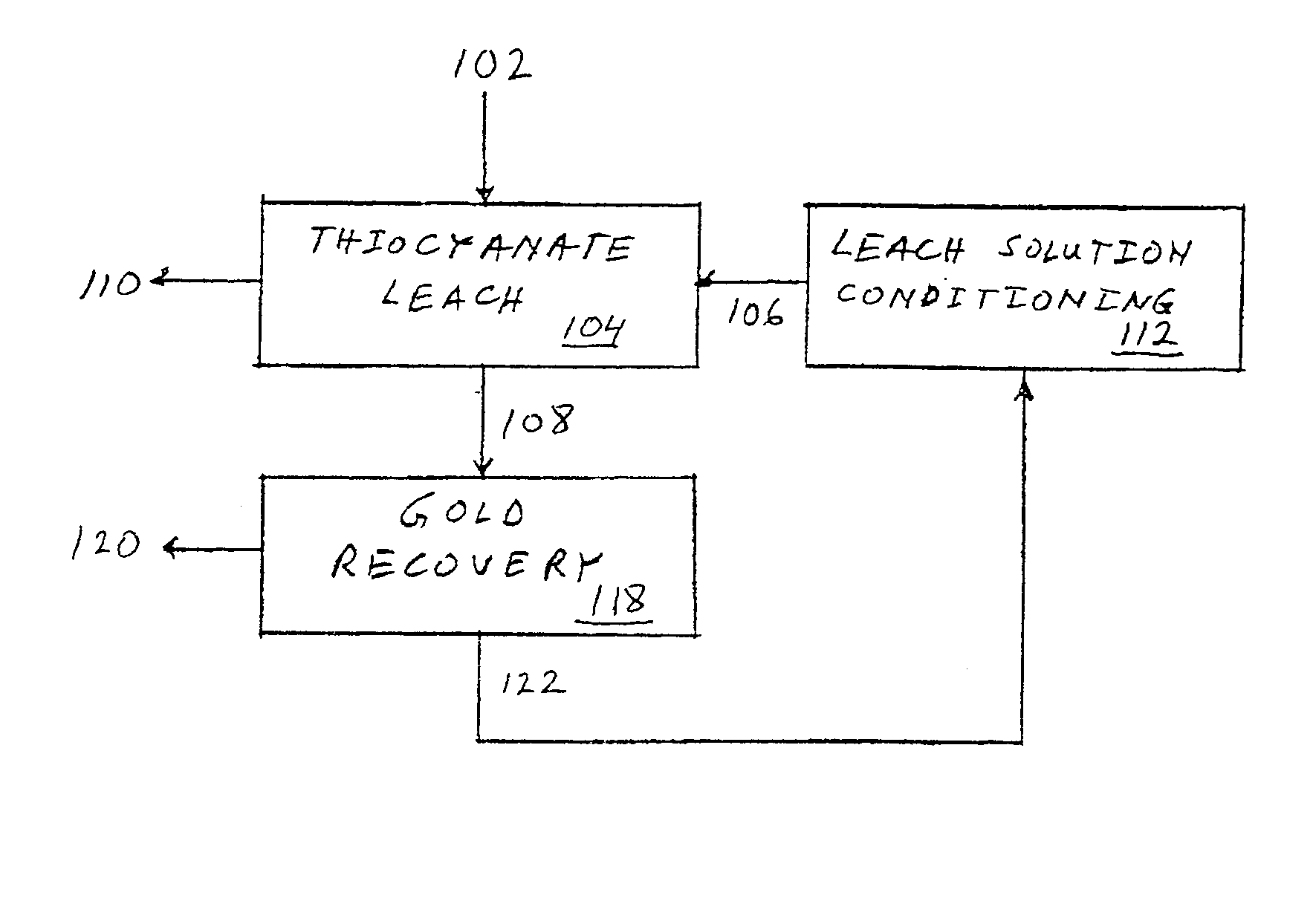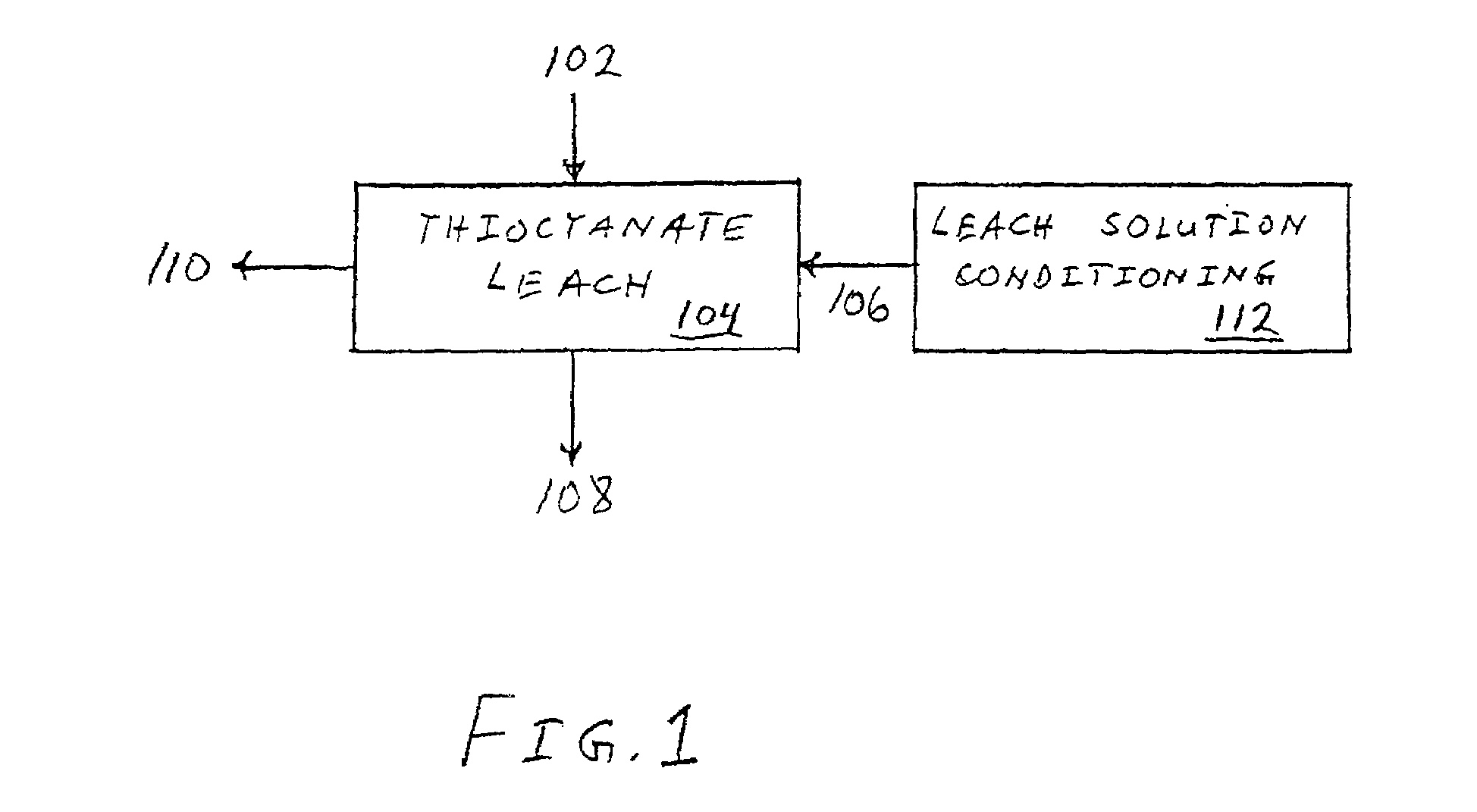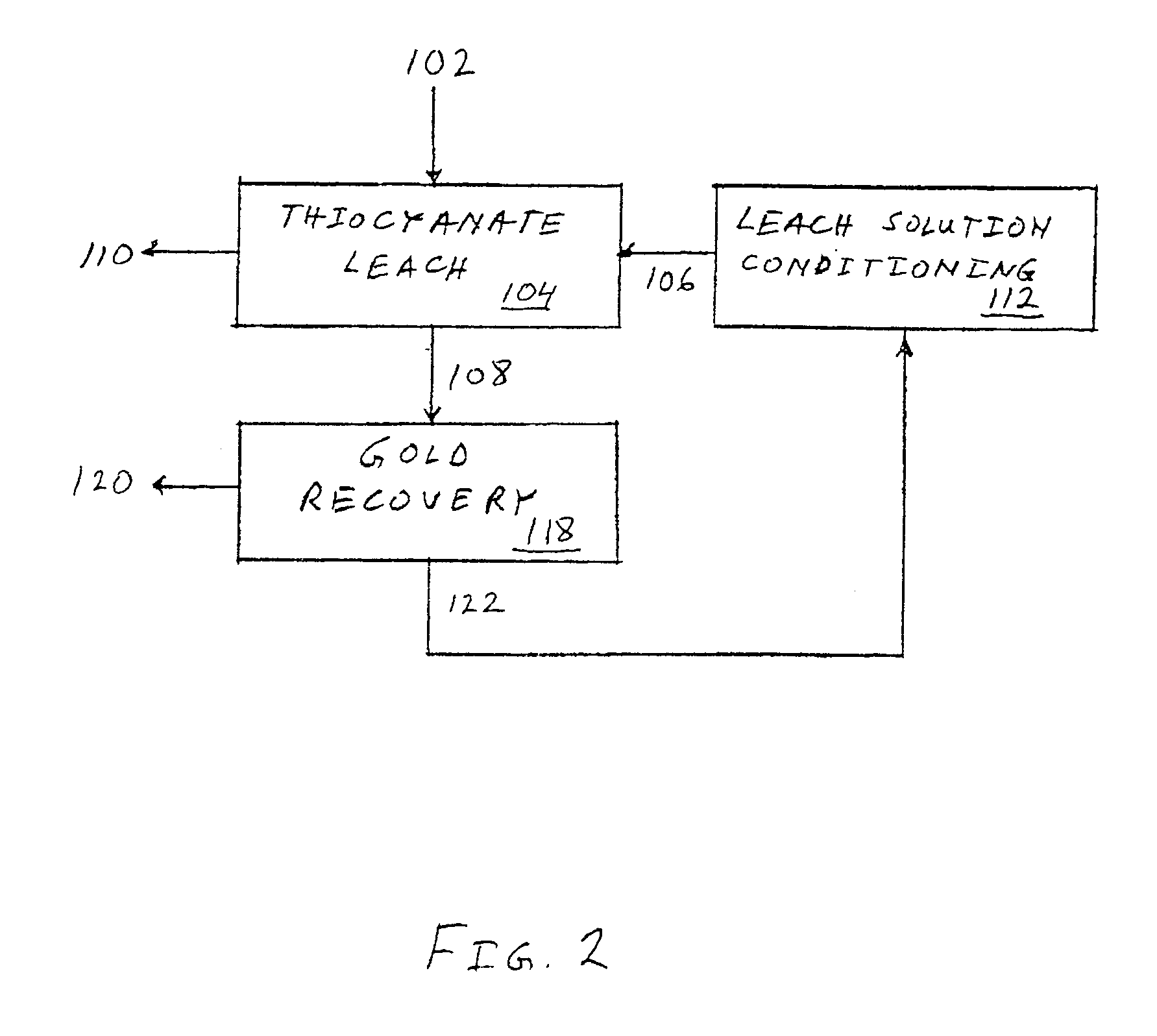Precious metal recovery using thiocyanate lixiviant
- Summary
- Abstract
- Description
- Claims
- Application Information
AI Technical Summary
Benefits of technology
Problems solved by technology
Method used
Image
Examples
example 1
Column Leach of Mildly Refracting Ore
[0126]Tests are performed on a mildly refractory sulfide ore from the Lone Tree mine located in Nevada, U.S.A. XRD / XRF semiquantitative analysis indicates the ore to be composed of about 86% quartz, 6% kaolin, 3% pyrite, 2% alunite, 1% gypsum, 1% jarosite and 1% barite. Representation assay information for the ore samples is shown in Table 3. The ore does not exhibit preg-robbing tendencies.
[0127]
TABLE 3Representative Ore Sample AssayAuS-Total(2)S-Sulfide(3)FeAsg / t(1)weight %weight %weight %ppm2.261.6430.9511.551655.9(1)grams per tonne(2)total sulfur content(3)sulfide sulfur content
[0128]Two sets of leach tests are performed, one using a cyanide leach solution and the other using a thiocyanate leach solution. All tests are performed on minus 10 mesh (1.68 mm) ore samples placed in 2 inch (50.8 mm) diameter columns for leaching.
[0129]For the cyanide leach tests, 200 grams of ore sample, alone or mixed with lime for neutralization, are loaded into ...
example 2
Bottle Roll Leach Following Bio-Oxidation Pretreatment of Refractory Sulfide Ore
[0133]Tests are preformed on samples of a refractory sulfide gold ore from the Lone Tree mine. A 65.8 kg sample of ore crushed to 100% passing 2 inches (50.8 mm) is subjected to bio-oxidation pretreatment in a column having an inside diameter of 11 inches (279.4 mm), to simulate bio-oxidation in a heap. Prior to placing the ore in the column, 1920 mL of a mixed culture of acidophilic iron-oxidizing bacteria, containing Acidithiobacillus ferrooxidans and Leptospirillum ferrooxidans, is mixed with the ore. During bio-oxidation a nutrient solution containing 0.4 g / L (NH4)2 SO4, 0.4 g / L MgSO4 7H2O and 0.04 g / L K2HPO4, is continuously recirculated through the ore in the column at a flow rate of about 6.5 mL / min. The column is continuously aerated from the base at an air flow rate of 28.3 L / h. The bio-oxidation pretreatment is continued for 258 days at room temperature (approximately 20-22° C.). Upon terminati...
example 3
Bottle Roll Leach Following Bio-Oxidation Pretreatment of Refractory Sulfide Ore
[0141]Bottle roll leach tests are performed as described in Example 2 using the biooxidized ore of Example 2. Tests are performed using freshly prepared thiocyanate leach solutions containing dissolved thiocyanate and ferric iron as shown in Table 9. Leaching continues for a total of 24 hours for each test. For each test, leach solution samples are obtained and analyzed at 2 hours, 4 hours, 6 hours 12 hours and 24 hours. For comparison, cyanide leachable gold for this ore is determined to be 69%. By “cyanide leachable gold”, it is meant gold extracted from a sample of the mineral material (e.g., the ore or the concentrate) by a standardized test procedure as follows:[0142]A 5 gram sample of the mineral material pulverized to a size of minus 200 mesh is placed into a test tube along with 10 ml of a solution containing 0.3 weight percent sodium cyanide and 0.3 weight percent sodium hydroxide in ionized wat...
PUM
| Property | Measurement | Unit |
|---|---|---|
| Percent by mass | aaaaa | aaaaa |
| Percent by mass | aaaaa | aaaaa |
| Percent by mass | aaaaa | aaaaa |
Abstract
Description
Claims
Application Information
 Login to View More
Login to View More - R&D
- Intellectual Property
- Life Sciences
- Materials
- Tech Scout
- Unparalleled Data Quality
- Higher Quality Content
- 60% Fewer Hallucinations
Browse by: Latest US Patents, China's latest patents, Technical Efficacy Thesaurus, Application Domain, Technology Topic, Popular Technical Reports.
© 2025 PatSnap. All rights reserved.Legal|Privacy policy|Modern Slavery Act Transparency Statement|Sitemap|About US| Contact US: help@patsnap.com



